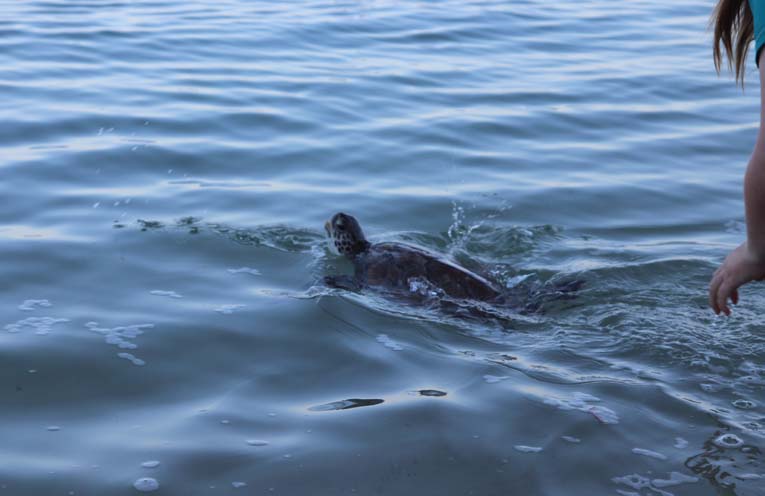
WHEN it comes to managing our coastal environment and assisting injured sea life, Sea Shelter is always there.
Lia Pereira, one of the founders of Sea Shelter and Irukandji Shark & Ray Encounters, believes that the consultation into our future Coastal Management Program offers the community a wonderful opportunity to get involved.
 Advertise with News of The Area today.
Advertise with News of The Area today.It’s worth it for your business.
Message us.
Phone us – (02) 4981 8882.
Email us – media@newsofthearea.com.au
Lia and her husband Ryan, a marine biologist, are passionate conservationists who would love to see our important ocean habitat and species conserved for generations to come.
They are looking forward to sharing some key considerations for the plans with Council.
“We have so many ideas,” Lia said.
“Of great importance is the water quality in the catchment.
“This was a huge issue last year and the year before in the floods.
“We believe testing the health of the runoff water and source toxin controls is incredibly important going forward.”
Sea Shelter has been involved in removing rubbish from the marine environment for many years.
“Roadside debris is something that many people don’t realise rubbish tossed on the ground far from the ocean still goes into the waterways and can end up in the ocean.
“The cost to conduct road cleanups is very hard to manage because Sea Shelter is not permitted to conduct a clean up without closing down half or all of the road which is extremely expensive for a not-for-profit organisation.
“We would love to see a collaboration between road closures for upgrades and local citizens who can come in and help clean up the roads that are shut down once the road workers have clocked off for the day.”
Also a major issue underwater and around the coastline is discarded fishing equipment.
“One of the gigantic problems for the local endangered sea turtles is the masses of fishing lines and hooks in a huge web across all the fishing break walls and favourite fishing spots.
“When we do a dive clean up it takes many hours and we barely make a dent in the underwater plastic web that slowly builds up and will still be made up of the same lines plus more in hundreds of years.”
Lia is optimistic that progress can happen in this space but it will take collaboration between all water users to change things.
“Fishing tackle stores now have a biodegradable fishing line option which may be a good alternative for our marine animals and especially the use of the hooks that dissolve rather than stainless steel hooks which have been causing havoc in the stomachs of accidentally fished sea turtles.”
Sea Shelter has been involved in the rescue of three turtles suffering from ingested fishing hooks in recent months.
Lia and the team at Sea Shelter believe more public education and initiatives are needed to help fishermen and fishing companies be more responsible in the disposal of their fishing gear, alongside further education on protection of wildlife and non-target species.
Sea turtle and sea bird entanglements and drownings can be avoided by simply making crab hoop traps safe and checking them regularly.
“It would be great to see workshops given to recreational fishermen who should be aware of safe procedures for dehooking and disentangling entrapped seabirds and marine animals.”
The group is also advocating for the removal of illegal traps which do not show the required information by fishing inspectors or partner organisations.
“Abandoned traps are more dangerous as they are not checked and other marine animals can become entangled in the ropes or non-targeted species could be caught and starve or drown,” Lia said.
The team are also passionate about protecting sanctuary zoning areas and believe that this is of the utmost importance.
The Port Stephens environment is hit hard during peak holiday periods and the Sea Shelter team are advocating for the protection of the sanctuary areas to allow breeding stocks to survive and continue to repopulate for fishermen in years to come without becoming extinct.
Sea Shelter is also interested in mapping the sea turtles’ food gardens and adjusting boat speeds in these areas.
“Boat strikes are a major killer of healthy adult breeding turtles,” Lia said.
By Marian SAMPSON
